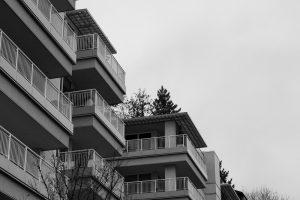 So what keeps you up at night? If you are a condo board member or a property manager, it might be that dreaded phone call reporting calamity at the condominium. Whether it is the report of a fire; or a frozen sprinkler leak; or an injury due to a common element failure, the association’s actions in the past, in the present, or in the future will determine the ultimate outcome of association liabilities.
So what keeps you up at night? If you are a condo board member or a property manager, it might be that dreaded phone call reporting calamity at the condominium. Whether it is the report of a fire; or a frozen sprinkler leak; or an injury due to a common element failure, the association’s actions in the past, in the present, or in the future will determine the ultimate outcome of association liabilities.
Condominium associations can assume a wide range of liabilities in this litigious environment we live and this article will not address most of these occurrences such as employee or third party lawsuits; violations of board fiscal responsibilities; and failure to follow administrative directives found in the condo declaration documents, to name just a few. Instead, this article will focus solely on Breach of Duty issues associated with common or limited common elements that could have been foreseen or avoided with proper attention by the community leaders.
Water Infiltration
One of the most common problems facing any building complex is water. Moisture infiltration through the building envelope can develop in virtually any type of structure. Keep in mind the building envelope includes not just the roof surface and exterior wall siding but also windows and doors as well as the foundation itself. Water infiltration takes as many forms as there are states of water, that is, moisture damage can be caused by free running water, ice, steam, and vapor. One of the most important issues to remember is water in any form requires time to cause damage. A short duration wetting rarely caused serious or extensive damage.
A vigilant condo board will have in place protocols and procedures to discover the first signs of water problems through the use of routine building inspection of the common areas and a population of unit owners informed on how to advise the board on water problems in their units. The condo’s building maintenance plan will require a visual inspection of all roof surfaces after any wind event over 50 miles per hour or hail or ice storms. Common area basements and crawlspaces should be viewed after extended rain events. All unit owners should be warned about freezing pipes and sprinkler systems. This is especially true for communities with a large proportion of snow birds taking extended vacations during the winter months. Requirements for low temperature alarms; minimum year-round thermostat settings; and hot water overflow pans should be well understood by all owners.
There should be a guideline in place for what actions are needed when a building envelope water infiltration problem is reported. The action needs to be timely and documented with the issue directed to a pre-determined individual who has the knowledge to understand the seriousness of the problem and the authority to act.
Perils of Poor Maintenance
An example of what can go wrong can be illustrated by the recent case of a relatively new four-story condominium building with a flat rubber membrane roof in Portland, Maine. The top floor unit owner observed some signs of interior wall water stains on the north side of the building. The problem was reported to the property manager who advised the board to hire a roofer to inspect the roof. As the water infiltration appeared to come and go with the way the wind blew, the board felt the problem could be put off as there were more pressing projects. Time passes before the unit owner hires his own building inspector who discovers a tear in a roof membrane seam was allowing water to enter the exterior wall cavity. Further invasive inspection of the exterior wall revealed that not only was the wall oriented strand board (OSB) siding beginning to rot but most of that side of the building’s fiberglass insulation was water saturated and the sheetrock walls had significant mold contamination requiring the unit owner’s family to move out of the unit during the mitigation and costly repair project. All would agree this was an avoidable liability for the condo, if prompt action had been taken.
Similarly, if a unit owner reports recent sheetrock cracks or door molding seams opening and doors not closing properly, the board should not assume it is a unit owner’s responsibility to repair. The interior walls may not be a common element, but the causes of the reported problems may relate directly to a common element such as the foundation or building framing. Taking all such reports seriously will show the owners their concerns are being listened to and potentially head off a widespread global problem throughout the entire complex.
Trip and fall hazards should also be taken seriously to avoid Duty of Care liability. Whether it is missing tiles on the swimming pool deck; damaged carpet in the halls or stairways; or the depressed asphalt pavement that ponds and freezes every winter, these problems are usually well known before the accident happens. You do not want to be the board member in front of the judge when he asks you how easy would it have been to repair the tripping hazard. And don’t forget the hidden fire hazards such as uncleaned common dryer vent ducts or lapsed inspections of the sprinkler system. Don’t depend on hindsight when it comes to risk management.
